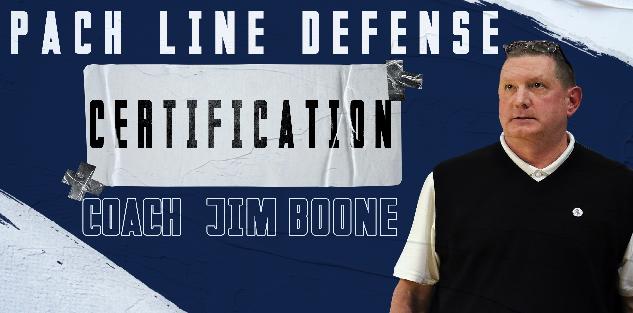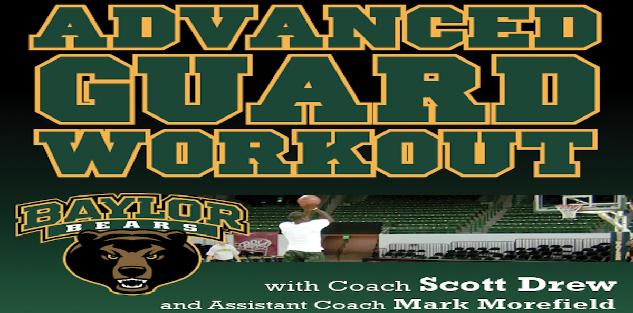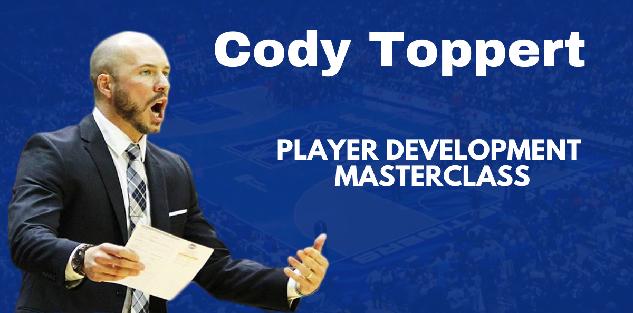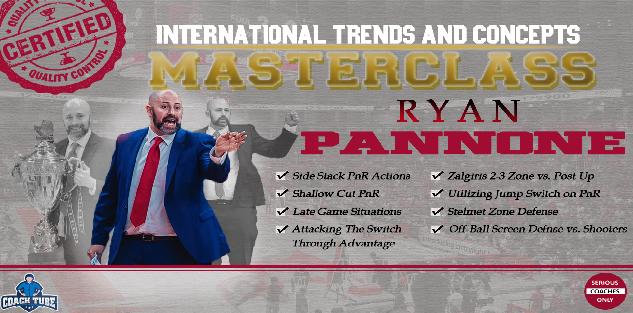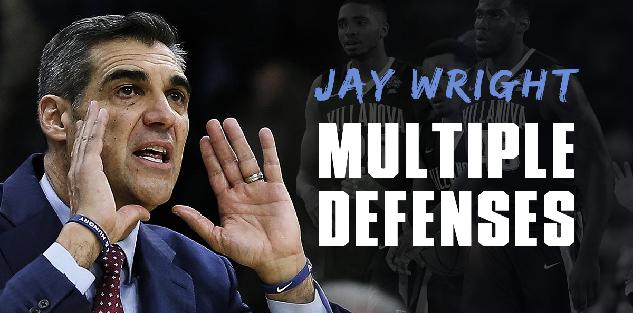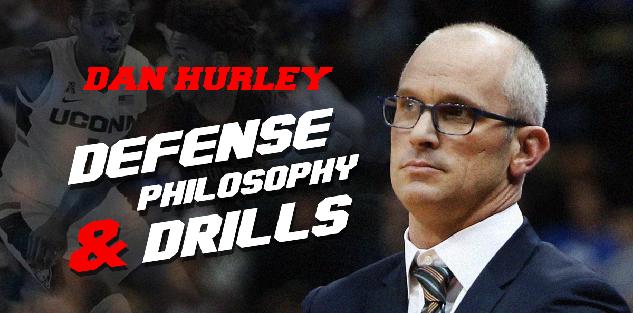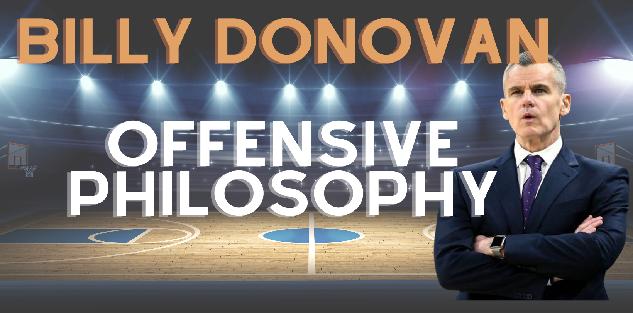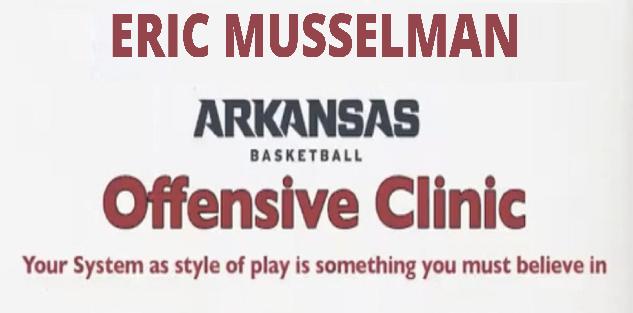Featured courses
- Two Great Game Situational Workouts For the Basketball Offseason by Grant Young
- Two Reads Basketball Players Must Understand Before Executing the Ball-Screen by Grant Young
- Two of LSU Coach Kim Mulkey’s Game-Winning Inbounds Plays by Grant Young
- Three Effective Early-Season Defensive Basketball Drills by Grant Young
- Four Essential Tips For Basketball’s 1-3-1 Zone Defense by Grant Young
- Four Zone Defense Drills to Strengthen Your Team by Grant Young
- How to Beat the Three Most Common Pick and Roll Coverages by Grant Young
- Two Drills to Improve Shooting at the Start of the Basketball Season by Grant Young
- Core Basketball Principles That Dallas Mavericks Coach Sean Sweeney Teaches by Grant Young
- Three Competitive Shooting Drills For Your Basketball Team by Grant Young
- How To Teach The ‘I’ Generation of Basketball Players by Grant Young
- Three Elite Drills to Begin a Basketball Practice With by Grant Young
- How to Build a Championship-Winning Basketball Team Culture by Grant Young
- Two of Texas Women’s Basketball Coach Vic Schaefer’s Tips For Team Culture by Grant Young
- Atlanta Dream WNBA Coach Brandi Poole’s Four Sets for Secondary Offense by Grant Young
- NC State Basketball Coach Brett Nelson’s 4 Crucial Point Guard Qualities by Grant Young
- Kentucky Coach Mark Pope’s Five Guard Rules For Offense by Grant Young
- McNeese State Basketball Coach Will Wade’s 4 Core Pillars by Grant Young
- 4 Tips To Instantly Improve Your Free Throw Shooting by Tyler Linderman
- Assemble a Championship-Caliber Basketball Rotation by Brandon Ogle
- Two of UConn Coach Dan Hurley’s Key Defensive Drills by Grant Young
- Four Post Moves All Basketball Forwards Should Have In Their Bag by Grant Young
- Four of Baylor Coach Nicki Collen’s Midseason Pick and Roll Adjustments by Grant Young
- WNBA Legend Sue Bird’s Two Tips For Attacking on Offense by Grant Young
- Houston Coach Kelvin Sampson’s Three Keys for Building a Basketball Program by Grant Young
- Two of Tom Izzo’s Top Michigan State Defensive Drills by Grant Young
- Four of Olympic Gold Medalist Coach Mechelle Freeman’s Relay Race Strategies by Grant Young
- Three Key Strategies Will Wade Uses to Build a Dominant Team by William Markey
- Five UConn Huskies Men’s Basketball Plays That You Can Use by Grant Young
- Three Tips for Maintaining Team Culture at the End of a Basketball Season by Grant Young
- Three Dribble Drive Motion Drills to Teach Your Basketball Team by Grant Young
- Three Dribbling Drills For Non-Primary Ball Handlers by Grant Young
- Four Advanced Ball Handling Drills For Basketball Guards by Grant Young
- Three Tips to Sharpen Your Post Player’s Footwork in Basketball by Grant Young
- These Three Pick and Roll Drills Are Crucial For Any Ball Screen Offense by Grant Young
- Three Closeout Drills to Improve Basketball Shooting Defense by Grant Young
- Three Tips to Perfect the Packline Defense in Basketball by Grant Young
- Four Keys to Executing the Read and React Offense in Basketball by Grant Young
- Three Tips to Develop Elite Basketball Shooters by Grant Young
- Three Crucial Keys to Executing the 5 Out Offense in Basketball by Grant Young
- These Three Offensive Sets Will Help You Beat Any Zone Defense by Grant Young
- Three Transition Basketball Drills To Play With More Pace by Grant Young
- Three 5 Out Offense Drills Any Basketball Coach Can Use by Grant Young
- Four Vital Techniques for a Motion Offense in Basketball by Grant Young
- Three Baseline Inbounds Plays To Win Your Basketball Team Games by Grant Young
- Four Drills For Sharpening the European Ball Screen Offense by Grant Young
- Three Positioning Tricks For a Basketball Zone Offense by Grant Young
- Three Rules to Perfecting Basketball's Lock Left Defensive System by Grant Young
- UCLA WBB Coach Cori Close’s Two Keys to Winning the Mental Game by Grant Young
- Four of Alabama Coach Nate Oats’ Favorite Basketball Drills by Grant Young
- Three Ways To Turn Transition Offense in Basketball Into Points by Grant Young
- Three Drills to Master Basketball's Pack Line Defense by Grant Young
- Three Transition Defense Drills to Halt Fast Breaks by Grant Young
- Four Offensive Rebounding Drills to Win Second Possessions by Grant Young
- 4 Defensive Technique Drills from Boston Celtics Assistant Coach Brandon Bailey by Marek Hulva
- 5 Drills to Improve Ball Handling by Tyler Linderman
- 13 FUNNY BASKETBALL GIFS by Alex
- BASKETBALL SPEED AND AGILITY: 8 QUESTIONS FOR COACHTUBE EXPERT RICH STONER by Jaycob Ammerman
- Defensive Strategies for Basketball by Ryan Brennan
- 4 Keys To Turning Your Program Into Championship Contender By Dallas Mavericks Coach Sean Sweeney by Marek Hulva
- 5 Components to Creating a Winning Basketball Program by Justin Tran
- Guide to Becoming a Lethal Scorer in Basketball by Justin Tran
- Zone Defense In the NBA Eastern Conference Finals by James Locke
- Mastering Court Mobility: Tips for Effective Movement in Basketball by Justin Tran
- 5 Basketball Shooting Drills: How to Develop a Sharpshooter by James Locke
- 6 Points of Emphasis for a Successful 5 Out Offense by Jaycob Ammerman
- Effective and Efficient Methods to Practice During the Basketball Season by Justin Tran
- Three Great Passing Drills From a Basketball Coaching Legend by Grant Young
- 7 Principles For Perfecting the Princeton Offense in Basketball by Grant Young
- How to Replicate A Modern NBA Offense by Grant Young
- Three Great Two-Ball Dribbling Drills For Basketball Development by Grant Young
- Two Rebounding Drills to Win Your Basketball Team Championships by Grant Young
- How to Improve Your Basketball Team’s Defense With the Shell Drill by Grant Young
- How Baylor Basketball’s Scott Drew Develops Elite Guard Play by Grant Young
- Off-Ball Movement Tips and Strategies: Lessons From the NBA Finals by James Locke
- Player Development: Scott Drew’s Tips for Producing NBA Guards by James Locke
- How to Execute a Spread Offense in Basketball by Grant Young
- Four Quality Quotes From Four Final Four Coaches by Grant Young
- A Guide to the Pack Line Defense by Alex Martinez
- 3 Defensive Build Up Drills to Improve Team Basketball Defense by Grant Young
- Battle of Two Great Coaches: Best Plays from the NBA Finals Contenders by Justin Tran
- 10 Creative Ways Athletic Programs Can Use a Video Board to Raise Money by Coach Williams
- How to Use 3 on 3 to Improve Your Basketball Team by Grant Young
- How to Defend the Pick and Roll by Grant Young
- Mastering Basketball Defense: Techniques, Drills, and Strategies for Success by Justin Tran
- Three Tips From The Coach Who Developed Giannis Antetokoumnpo by Grant Young
- 2023 NBA Draft: Skills and Technique from Top Prospects by Justin Tran
- From College to the Pros: Transitioning the Dribble Drive Offense by Justin Tran
- Positionless Basketball: Redefining Roles on the Court by Justin Tran
- Revolutionize Your Offense: Proven Concepts to Elevate Your Basketball Game by Justin Tran
- 5 Essential Fastbreak Drills Every Basketball Coach Should Know by James Locke
- How to Run a Circle Offense in Basketball by Grant Young
- Game-Changing Strategies: ATO Plays in the EuroLeague and Olympics by Justin Tran
- How to Stand Out at Basketball Tryouts by Grant Young
- How to Improve Your Basketball Team’s Transition Defense by Grant Young
- Indiana Fever GM Lin Dunn’s Two Keys For Women’s Basketball Coaches by Grant Young
- Strength Training Strategies Every Basketball Player Should Have by Grant Young
- A WNBA Basketball Coach’s Four Priorities In Transition Defense by Grant Young
- Three Adjustments to Make When Your Basketball Offense Isn’t Working by Grant Young
- Three Pillars to Applying Defensive Pressure on the Basketball Court by Grant Young
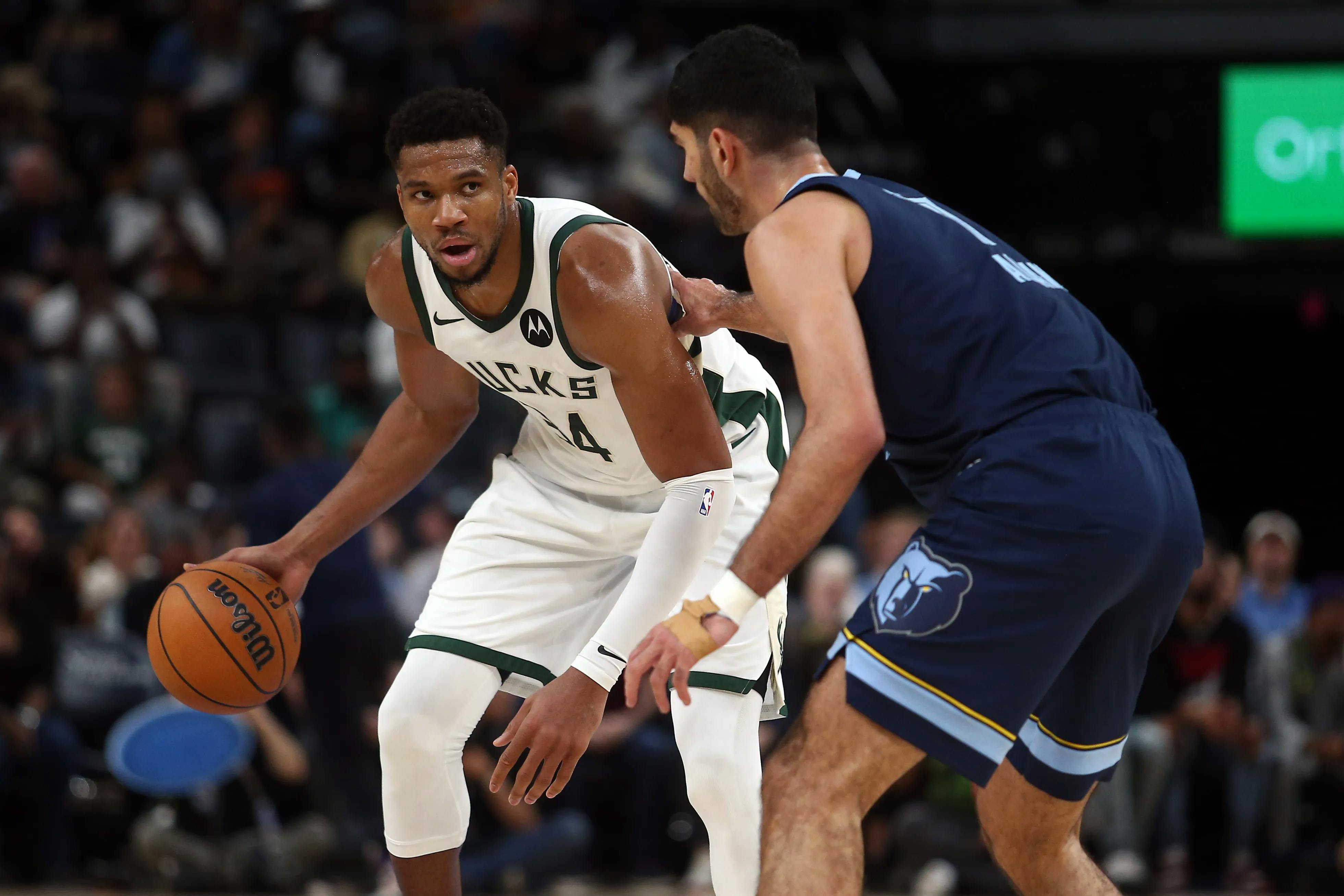
Three Dribbling Drills For Non-Primary Ball Handlers
- By Grant Young
It's crucial for non-primary ball handlers in basketball to practice dribbling for several important reasons.
- Having a well-rounded skill set enhances a player's overall value to the team. Even if a player isn’t the main ball handler, being able to dribble effectively allows them to contribute to the offense by creating their own shot or breaking through a defensive set. This versatility can be a game-changer, especially in tight situations where primary ball handlers may be closely guarded or in foul trouble.
- Improving dribbling skills helps to boost confidence on the court. Non-primary ball handlers often may hesitate to take the initiative due to a lack of practice in ball handling. When they develop their dribbling ability, they become more self-assured in their gameplay. This confidence can lead to better decision-making on the court, whether it’s driving to the hoop, passing to teammates, or executing plays.
- Practicing and drilling dribbling enables players to better understand spacing and movement. This knowledge helps non-primary ball handlers to read the game more effectively, allowing them to create opportunities not just for themselves but also for others. By dribbling well, they can draw defenders away from their teammates, opening up passing lanes and creating favorable situations for scoring.
- In today’s fast-paced game, the ability of any player to handle the ball is invaluable. Defenses are increasingly focusing on double-teaming primary ball handlers, so having multiple players capable of dribbling allows for better ball movement and offensive fluidity. This can keep the defense guessing and lead to easier scoring opportunities.
All of this is to say that it's essential for non-primary ball handlers to practice dribbling. This is why we’ve selected three dribbling drills that are perfect for developing players who haven’t acquired the same confidence in ball handling as the guards on your team.
Rick Torbett - Three Ball Coordination Workout

Rick Torbett is the founder of Better Basketball and the creator of the Read and React offense. In 2001, he created a service that provided DVD and now a streaming service that consists of training and instructing basketball players and coaches.
In his ‘Better Ball Handling’ course, Coach Torbett conveys a series of three-ball dribbling drills as part of what he calls the Three Ball Coordination Workout that is perfect for non-primary ball handlers who are looking to improve their focus and efficiency with the ball in their hands.
The first part of the drill is a sort of juggling act between the three balls. While one ball is being dribbled from one hand to the other (let’s say the right hand to the left hand), one ball is being moved in the air from the left hand to the right hand while the third ball is being moved from the right hand back toward the ground.
The next phase of this drill requires all three balls placed in front of the player. The player will begin by dribbling the middle ball and one of the outside balls (one with each hand) at the same time. After two dribbles, the player will move so that the middle ball is being dribbled by the other hand while the ball that wasn’t being dribbled now is. The player will continue this way so that the middle ball is always getting dribbled by one hand.
From there, the player (who was standing stationary before) can do the same drill while slowly walking forward.
Dave Severns - 4 Square or Change Drill
Dave Severns is currently a basketball scout for the Indiana Pacers. Before that, he spent 14 years in the NBA as Director of Player Development for the LA Clippers from 2010-2016, Director of Player Development for the Chicago Bulls from 2008-2010, and Pro Personnel Scout for the LA Clippers from 2016-2021.
Coach Severns’ ‘Elite Ballhandling & Passing’ course details what he calls a 4 Square or Change Drill, which can be used by any basketball player who’s looking to improve their dribbling ability.
The drill begins with a line of players along the baseline, aligned with one block. The first player in line will start dribbling to the elbow with their right hand. Once he gets to the elbow, he makes some sort of dribble move (ideally between the legs or a simple crossover for non-primary ball handlers) and pivots the dribbling to the other elbow with the same hand.
They will then do the same thing at that next elbow (ideally a different move if it’s in their repertoire), then again at the baseline, and then they’ll come to a jump stop and pick up their dribble where the line begins. Then the next player will go in line.
After two or three reps of this, the line will move to the other block and players will do the same thing with their left hand.
Andy Cox - Stationary Dribble Floats
Andy Cox is in his fourth season as one of the assistant coaches for the Concordia University men's basketball program.
Andy was a four-year varsity player at Dana College (Neb.) from 2001-05. After graduating from Dana in 2006, he went on to take a job as an assistant coach at Dana. After a year at Dana, Andy took an assistant coach position at Shanley High School in Fargo where he served from 2006-08.
Sometimes it’s best to start with simple drills to build up a non-primary ball handler’s confidence. And in his ‘Daily Ball-Handling’ course, Coach Cox details how stationary dribble floats drill, which will be able to accomplish this.
This drill starts with the player executing a crossover while making a “float” step from side to side. After 30 reps of these, they’ll then move to doing the same thing between the legs. After 30 reps of that, they’ll do this same float step while dribbling the ball behind their back.

